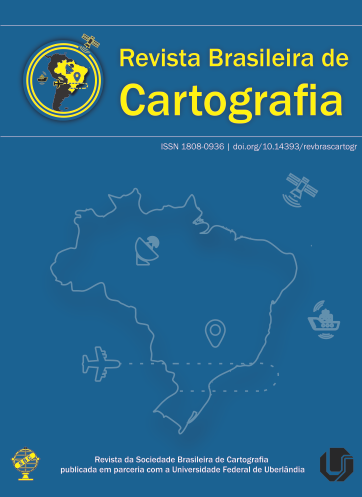Cycling Planning in Small-Sized Brazilian Cities Based on Open Data Geoprocessing
Main Article Content
Abstract
The objective of this paper is to propose a method to systematize cycling planning in small-sized Brazilian cities based on open data, such as census data, collaborative mappings, and Digital Elevation Models, seeking to assist in the elaboration of municipal urban mobility plans, and that can be adapted to other countries with similar characteristics and that have equivalent information. The proposed method is summarized in four steps: geoprocessing of open spatial data, which allows the georeferencing of potential cycling demand and cycling trip generator poles, as well as updated representations of road systems; definition of the subsets of origins and destinations of the cycling routes to be identified using Dijkstra’s algorithm, in order to minimize the overall cost associated with the road segments' operational quality for cycling; impedance assignment to road segments based on their average slopes and cycling Levels of Traffic Stress; and assessment of these road segments’ proportions in the identified cycling routes (Cycling Potential Index). Examples of the proposed method’s application were carried out in two Brazilian cities, Bariri-SP and Bocaina-SP, through which it was possible to define, for both cities, continuous and interconnected cycling axles, accessible to most of the study areas’ potential cyclists. Therefore, despite the obvious importance of conducting specific research and field surveys in each Brazilian city for greater reliability of the results, the proposed method can contribute to the popularization of cycling in utilitarian trips and to the strengthening of the “bicycle culture” still in force in small-sized Brazilian cities.
Downloads
Metrics
Article Details

This work is licensed under a Creative Commons Attribution 3.0 Unported License.
Authors who publish in this journal agree to the following terms:
- Authors retain copyright and grant the journal right of first publication with the work simultaneously licensed under a Creative Commons Attribution License that allows others to share the work with an acknowledgment of the work's authorship and initial publication in this journal.
- Authors can enter into separate, additional contractual arrangements for the non-exclusive distribution of the journal's published version of the work (e.g., post it to an institutional repository or publish it in a book), with an acknowledgment of its initial publication in this journal.
- Authors are permitted and encouraged to post their work online (e.g., in institutional repositories or on their website) before and during the submission process, as it can lead to productive exchanges, as well as earlier and greater citation of published work (see "The Effect of Open Access").





